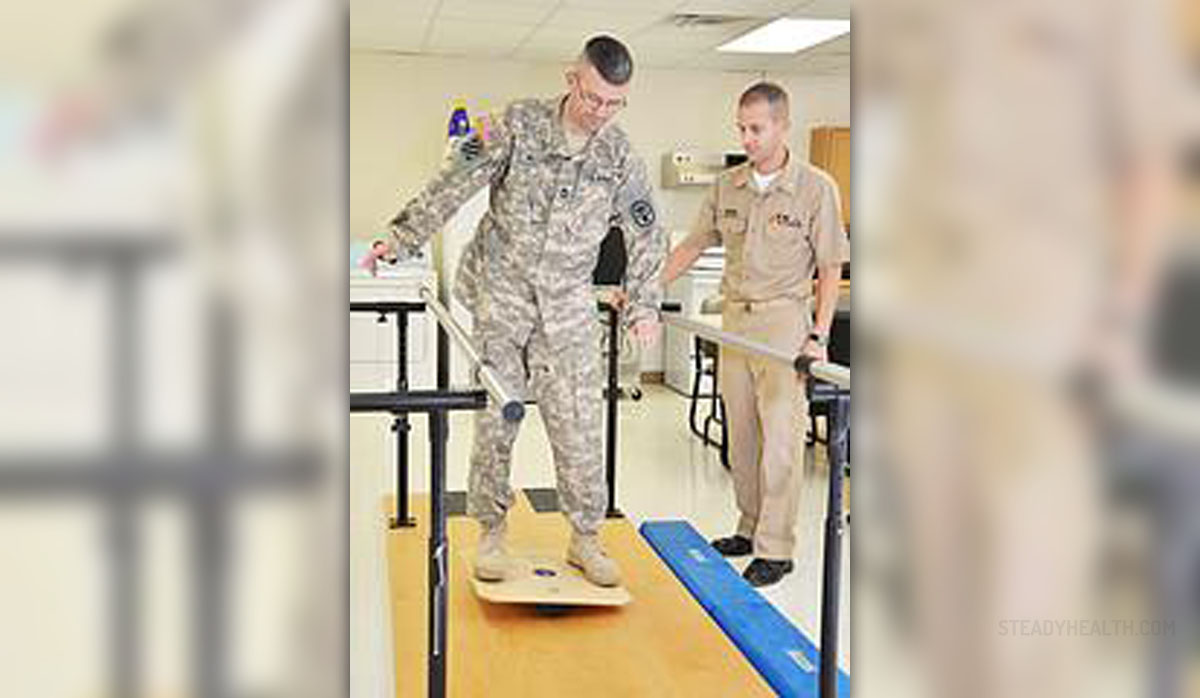
Many people undergo occupationaltherapy after they have suffered an injury or some other kind ofdebilitating health problems. People usually have problemsdistinguishing physiotherapy from occupational therapy. However, thetwo are quite different.
Namely, while physical therapy focuseson exercises and activities which enable a person to use an injuredbody part, occupational therapy teaches people to accommodate toliving with disabilities, learning how to modify their lifestyles inorder to perform all daily activities without problems.
What is Occupational Therapy?
By definition, occupational therapy is adiscipline promoting health and making it possible for people toperform constructive and productive daily activities. People who arein charge of this form of therapy are called occupational therapistsand they commonly work with mentally, physically, developmentally oremotionally impaired patients.
So, the main goal of this form oftherapy is making it possible for these people to live a productivelife, being capable to perform all the necessary actions in theireveryday lives, regardless of their disabilities.
Initially, once an occupationaltherapist receives a new patient, he/she performs an assessment andanalysis of the current state of the individual, bearing in mind manyhealth factors including environmental, psychosocial, mental,spiritual, political and cultural ones. Therefore, occupationaltherapy borders with many other sciences such as physiology,sociology, anthropology etc.
Most occupational therapies involve acertain process. First of all, upon admitting a patient, his/her state isassessed medically through a stage called referral. Then, theinformation gathering takes place, completing the initial diagnosisand assessment. Once this is done, the therapist forms a descriptionof the problem and identifies it, developing a treatment plan andsetting final goals. Through a carefully designed plan of actionsduring the treatment, the therapist gradually applies all thepredefined treatment steps, assessing them again and revising them,making sure that they are optimal.
Once the treatment stages are done, thetherapist measures the outcomes and, if the goals have been reached,stops the treatment, reviewing the success of the entire process.
Keep in mind that these steps ofoccupational therapy may vary from one country to another. Thereby,Canada may have steps which are different and carried out in asmaller number of stages. However, the final effect of occupationaltherapies are more or less the same.
The profession of an occupationaltherapist is a growing one, in terms of the market requirements andjob opportunities, especially when it comes to treating the elderly.Moreover, in the US, occupational therapists are regulated and thequalification requirements vary from one state to another. Usually,occupational therapists have their own assistants who work moreclosely with the patients. During this process, the therapisthim/herself merely observes, reviews and assesses the situation,guiding and supervising the assistant.
Area of Practice
Occupational therapists may work inmany places, being specialized in numerous different fields.Therefore, the opportunities related to this job vary, depending onthe country, the health care system and many other factors of thistype.
In the US, the area of practice foroccupational therapists is regulated by the American OccupationalTherapy Association, saying in which conditions, be it hospital care,mental care facility or community practice, can a therapist work andwhat areas of work can he/she be involved in, in terms ofpopulation, diagnosis, specialties and different settings.
The main flaw and positive side of theoccupational therapy is its flexibility in terms of treatment andassessment. Therefore, a lot of therapists find it hard andchallenging to define the scope of their profession, especially whenone bears in mind the constant social and environmental changes whichtake place in the world, leading to various new types of patientssuitable for this form of treatment and recovery.
For example, while some patients mayneed to learn how to manage living in their homes once they have beendiagnosed with a disability, other people may need to return to work.In the latter situation the therapist is engaged in planning the work activities, evaluating thework space, assessing the recovery process, arranging the necessities foremployment etc.
On the other hand, the therapist mayneed to teach the patient how to manage cooking, dressing, eating andperforming many other functions of this type ranging from beingcapable of maintaining hand-eye coordination to improvingdecision-making processes or abstract-reasoning, problem-solving andperceptual, memory, sequencing and coordination skills.
So, the occupational therapist mayapply all the activities necessary for helping an individual throughone-to-one sessions, group therapy, school therapy, work therapy, orsome other forms of treatment and recovery stimulation.
Finally, if the patients suffer frommemory and organization problems due to their conditions, theactivities may involve time management, budgeting, shopping,homemaking and the use of public transportation. Of course, the rangeof activities practiced depends on the condition being treated.
All in all, numerous activities can bea part of occupational therapy, a discipline which focuses onrestoring capabilities of the patient necessary for living asuccessful and productive life, despite the disabilities he/shesuffers from.

















Your thoughts on this
Loading...